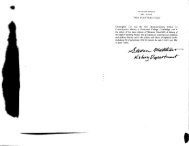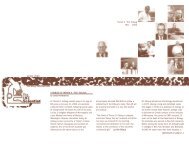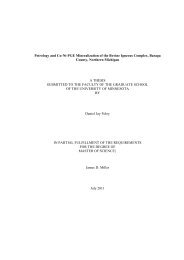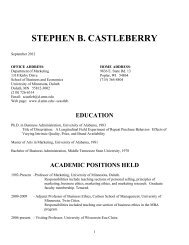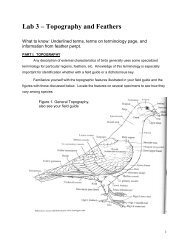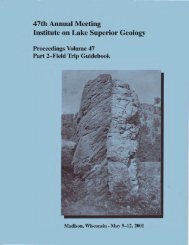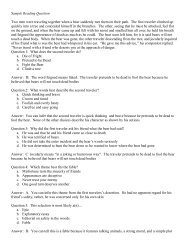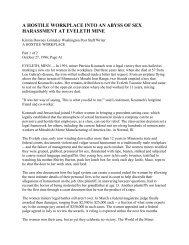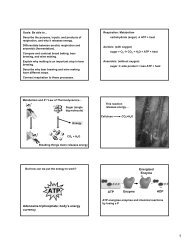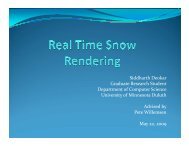Program, Abstracts, and Guidebooks - University of Minnesota Duluth
Program, Abstracts, and Guidebooks - University of Minnesota Duluth
Program, Abstracts, and Guidebooks - University of Minnesota Duluth
Create successful ePaper yourself
Turn your PDF publications into a flip-book with our unique Google optimized e-Paper software.
—72—<br />
the Quetico belt by Stockwell (1964). The relationship between<br />
these two belts has been considered in recent papers by Goodwin<br />
(1968), Kalliokoski (1968) <strong>and</strong> Ayres (1969, 1970). Goodwin <strong>and</strong><br />
Kalliokoski postulate that the Keewatin belt is older than the<br />
Quetico belt while Ayres suggested that Quetico rocks are over—<br />
lain by those <strong>of</strong> the Keewatin belt.<br />
Early Precambrian Metavolcanic <strong>and</strong> Metasedimentar"T Rocks<br />
1. Lithologies:<br />
A — Metasediments<br />
Metasedimentary rocks form two distinct lithologic groups:<br />
a thick sequence <strong>of</strong> relatively uniform greywacke, siltstone, <strong>and</strong><br />
argillite that is predominantly within the Quetico belt; <strong>and</strong> a<br />
thinner sequence more variable <strong>and</strong> coarser—grained <strong>of</strong> conglomerate,<br />
greywacke, argillite <strong>and</strong> iron formation that isinterlayered with<br />
metavolcanic formations <strong>of</strong> the Keewatin belt. The finer—grained<br />
metasediments within the Quetico belt <strong>and</strong> the southern part <strong>of</strong> the<br />
Keewatin belt have been tentatively correlated with the Couchiching<br />
formation by many authors (liorwood <strong>and</strong> Pye, 1955; Macdonald, 1942;<br />
Pye, 1952). The coarser grained metasediments within the Keewatin<br />
belt form part <strong>of</strong> the Windigokan series <strong>of</strong> Tanton (1921).<br />
B —<br />
Metavolcanics<br />
The metavolcanic rocks in the southern part <strong>of</strong> the area are<br />
predominantly maf Ic to intermediate, massive, pillowed <strong>and</strong> amygdaloidal<br />
flows. In the northwestern part <strong>of</strong> the belt, however, intermediate to<br />
felsic volcanic breccias <strong>and</strong> flows are abundant.<br />
2. Stratigraphic Relationships:<br />
Reconstruction <strong>of</strong> the stratigraphy is difficult because <strong>of</strong><br />
paucity <strong>of</strong> good exposure along contacts, deformation by folding <strong>and</strong><br />
faulting, <strong>and</strong> interfingering <strong>of</strong> the various units.<br />
In the southern part <strong>of</strong> the area the finer—grained relatively<br />
un:iform metasediments (Couchiching) are overlain in most cases by<br />
the coarser—grained lithologically heterogeneous<br />
m?tasediments (Windigokan). Both <strong>of</strong> these units thin northward<br />
<strong>and</strong> interfinger the metavolcanic sequence.<br />
The finer—grained metasedimentary unit contains a thin but<br />
laterally extensive mafic metavolcanic unit that defines the boundary<br />
between the Quetico <strong>and</strong> Keewatin belts. Metasediments above<br />
<strong>and</strong> below this metavolcanic unit are lithologically similar (Peach,<br />
1951; Mackasey, 1970). Metasedimepts above the metavolcanic unit<br />
are part <strong>of</strong> PyeTs (1952) group B defined in the eastern part <strong>of</strong> the




